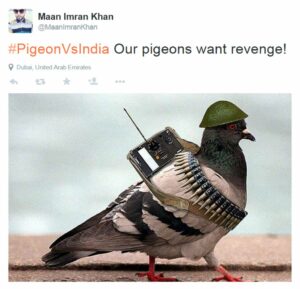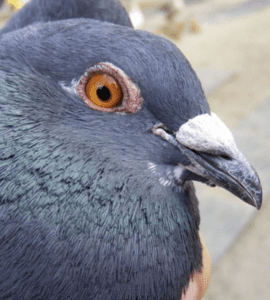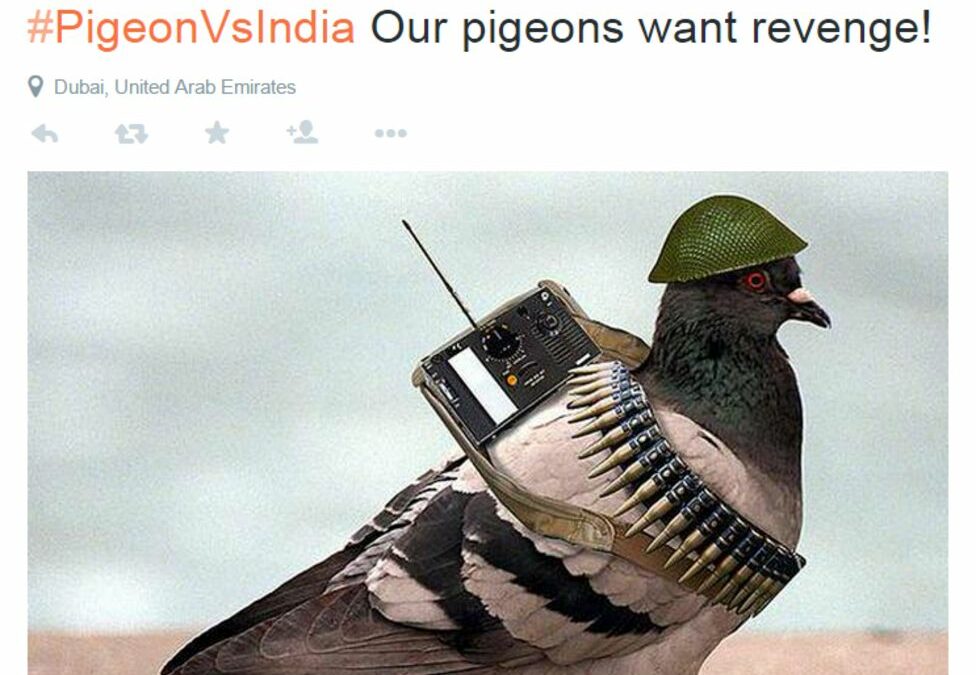
by Pigeon Patrol | Oct 3, 2023 | Bird Spike, Pigeon Predators, Pigeon Spikes, Pigeons, Pigeons in the News, Raccoons, Sparrows
A FALCON and a pigeon have been killed in Co Tyrone in what has been described as “one of the most serious incidents of peregrine persecution in Northern Ireland for several years”.
The PSNI were last night continuing to investigate after the birds were found dead at around 10pm in the Scraghey area, near Castlederg on July 10.
It is thought those behind the attack tied up the pigeon and covered it with poison, using it as bait to trap a peregrine falcon.
DUP MLA Jim Wells, also a member of the NI Raptor Study Group, described the incident as “cruel”.
“The vigilance of several members of the Raptor Study Group and the very quick response by the PSNI has revealed what is likely to be one of the most serious incidents of peregrine persecution in Northern Ireland for several years,” he told the Ulster Herald.
“The use of poison on a pigeon to kill a protected bird of prey is cruel, dangerous and totally irresponsible. The peregrine falcon once faced extinction due to the use of pesticides and now it’s recovery is threatened by those who seek to kill adults and young using totally illegal and reckless methods”.
He added:”The research has revealed that illegal prosecution remains a problem in some parts of the county. There are those who want to prevent people living in this area from seeing the fastest bird in the world”.
Source
Pigeon Patrol
Pigeon Patrol Products & Services is the leading manufacturer and distributor of bird deterrent (control) products in Canada. Pigeon Patrol products have solved pest bird problems in industrial, commercial, and residential settings since 2000, by using safe and humane bird deterrents with only bird and animal -friendly solutions. At Pigeon Patrol, we manufacture and offer a variety of bird deterrents, ranging from Ultra-flex Bird Spikes with UV protection, Bird Netting, 4-S Bird Gel and the best Ultrasonic and audible sound devices on the market today.
Canada’s top wholesaler for bird deterrent products for twelve consecutive years.
Contact us at 1- 877– 4– NO-BIRD, (604) 585-9279 or visit our website at https://www.pigeonpatrol.ca/
Bird Gone, Pigeon Gone, Pigeon problems, pigeon spikes, 1-877-4NO-BIRD, 4-S Gel, Bird Control, Pigeon Control, bird repellent, Bird Spikes, sonic bird repellent, stainless steel bird spikes, bird spikes Vancouver, Ultra Sonic Bird Control, Bird Netting, Plastic Bird Spikes, Canada bird spike deterrents, Pigeon Pests, B Gone Pigeon, Pigeon Patrol, pest controller, pest control operator, pest control technician, Pigeon Control Products, humane pigeon spikes, pigeon deterrents, pigeon traps, Pigeon repellents, Sound & Laser Deterrents, wildlife control, raccoon, skunk, squirrel deterrent, De-Fence Spikes, Dragons Den, Pigeon, Pigeon Patrol, Pigeons Roosting, Vancouver Pigeon Control, Bird Spikes, Bird Control, Bird Deterrent, Pigeon Deterrent, Surrey Pigeon Control, Pest, Seagull deterrent Vancouver Pigeon Blog, Birds Inside Home De-fence, Pigeon Nesting, Bird Droppings, Pigeon Dropping, woodpecker control, Keep The Birds Away, Birds/rats, seagull, pigeon, woodpecker, dove, sparrow, pidgeon control, pidgeon problem, pidgeon control, flying rats, pigeon Problems, bird netting, bird gel, bird spray, bird nails, bird guard, Pigeon control, Bird deterrents, Pigeon deterrents, Bird control, solutions, Pigeon prevention, Pigeon repellent, Bird proofing, Pest bird management, Pigeon spikes, Bird netting, Humane bird control, Bird exclusion, Urban bird control, Anti-roosting devices, Pigeon removal, Bird barriers
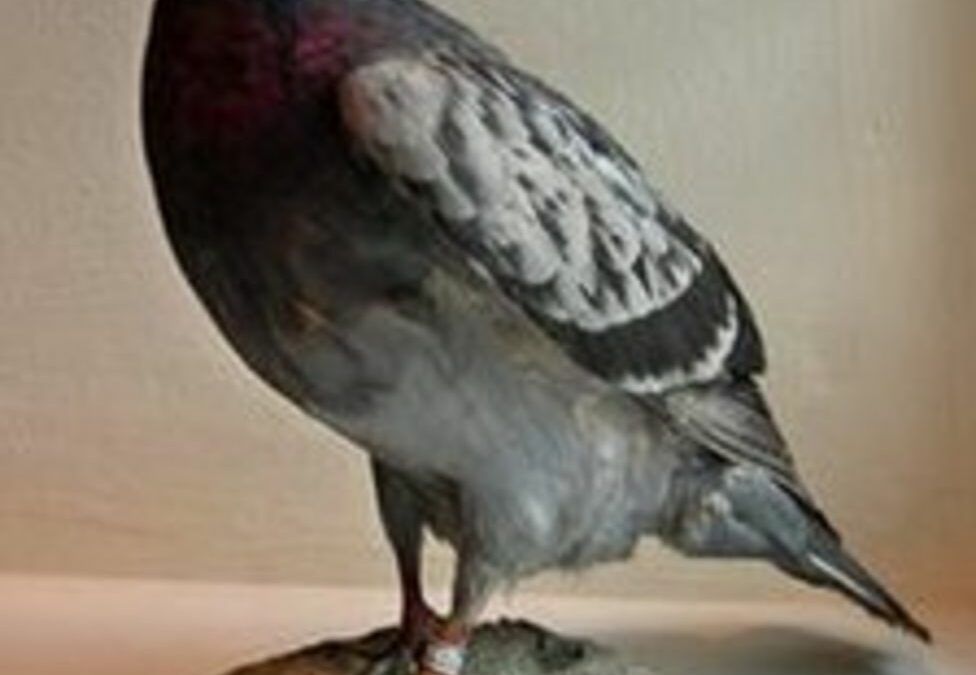
by Pigeon Patrol | Oct 3, 2023 | Bird Spike, Pigeon Predators, Pigeon Spikes, Pigeons, Pigeons in the News, Raccoons, Sparrows, UltraSonic Bird Control
Filmmaker Michael Bay has been charged with killing a pigeon back in 2018 while filming a movie in Italy.
The Wrap reported that the Transformers director was accused of killing the bird during the production of Netflix’s 6 Underground in Rome.
Authorities claim the homing pigeon was killed on a moving dolly during a take.
Pigeons are protected in both Italy and in the European Union under the Birds Directive, which states it is illegal to ‘kill, trap or trade’ them.
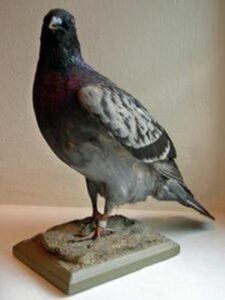
According to The Wrap, an individual who was allegedly present when the incident occurred on set reported it to Italian police shortly after. However, Bay has fiercely denied these claims.
He told the outlet: “I am a well-known animal lover and major animal activist.
“No animal involved in the production was injured or harmed. Or on any other production I’ve worked on in the past 30 years.”
Bay and his legal team have made multiple attempts to have the case thrown out in court.
The director maintains as he has video evidence of the incident, which proves he is innocent.
He said: “We have clear video evidence, a multitude of witnesses, and safety officers that exonerates us from these claims. And disproves their one paparazzi photo — which gives a false story.”
He added: “There is an ongoing court case so I cannot get into the specifics, but I am confident we will prevail when I have my day in court.
While Italian authorities have offered to settle the case with the director paying a small fine, Bay refused as he did not want to ‘plead guilty to having harmed an animal’.
The 2018 flick 6 Underground follows a group of people who fake their own deaths and form a vigilante team to stage a coup d’état against a ruthless dictator.
The film stars Ryan Reynolds, Dave Franco, Melanie Laurent and Corey Hawkins.
And, just like all of Bay’s movies, 6 Underground had a whopping budget of USD $150 million (AUD 216m).
But despite this, it was a flop according to Netflix’s head of original films, Scott Stuber.
“We didn’t feel like we got there on that one creatively,” Stuber told Variety.
“It was a nice hit, but at the end of the day we didn’t feel like we nailed the mark to justify coming back again.
“There just wasn’t that deep love for those characters or that world.”
Source
s
Pigeon Patrol
Pigeon Patrol Products & Services is the leading manufacturer and distributor of bird deterrent (control) products in Canada. Pigeon Patrol products have solved pest bird problems in industrial, commercial, and residential settings since 2000, by using safe and humane bird deterrents with only bird and animal -friendly solutions. At Pigeon Patrol, we manufacture and offer a variety of bird deterrents, ranging from Ultra-flex Bird Spikes with UV protection, Bird Netting, 4-S Bird Gel and the best Ultrasonic and audible sound devices on the market today.
Canada’s top wholesaler for bird deterrent products for twelve consecutive years.
Contact us at 1- 877– 4– NO-BIRD, (604) 585-9279 or visit our website at https://www.pigeonpatrol.ca/
Bird Gone, Pigeon Gone, Pigeon problems, pigeon spikes, 1-877-4NO-BIRD, 4-S Gel, Bird Control, Pigeon Control, bird repellent, Bird Spikes, sonic bird repellent, stainless steel bird spikes, bird spikes Vancouver, Ultra Sonic Bird Control, Bird Netting, Plastic Bird Spikes, Canada bird spike deterrents, Pigeon Pests, B Gone Pigeon, Pigeon Patrol, pest controller, pest control operator, pest control technician, Pigeon Control Products, humane pigeon spikes, pigeon deterrents, pigeon traps, Pigeon repellents, Sound & Laser Deterrents, wildlife control, raccoon, skunk, squirrel deterrent, De-Fence Spikes, Dragons Den, Pigeon, Pigeon Patrol, Pigeons Roosting, Vancouver Pigeon Control, Bird Spikes, Bird Control, Bird Deterrent, Pigeon Deterrent, Surrey Pigeon Control, Pest, Seagull deterrent Vancouver Pigeon Blog, Birds Inside Home De-fence, Pigeon Nesting, Bird Droppings, Pigeon Dropping, woodpecker control, Keep The Birds Away, Birds/rats, seagull, pigeon, woodpecker, dove, sparrow, pidgeon control, pidgeon problem, pidgeon control, flying rats, pigeon Problems, bird netting, bird gel, bird spray, bird nails, bird guard, Pigeon control, Bird deterrents, Pigeon deterrents, Bird control, solutions, Pigeon prevention, Pigeon repellent, Bird proofing, Pest bird management, Pigeon spikes, Bird netting, Humane bird control, Bird exclusion, Urban bird control, Anti-roosting devices, Pigeon removal, Bird barriers
bird guard
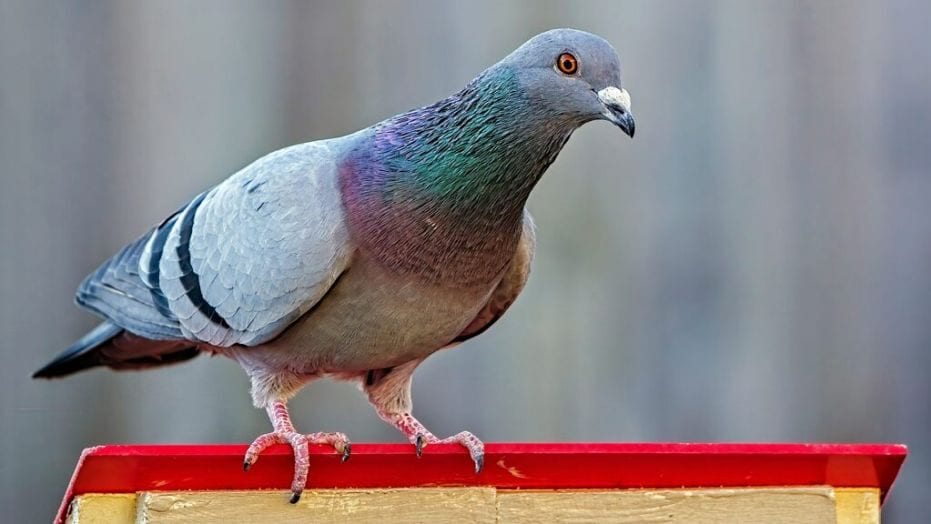
by Pigeon Patrol | Sep 25, 2023 | Bird Spike, Pigeon Predators, Pigeon Spikes, Pigeons, Pigeons in the News, Raccoons, Sparrows, UltraSonic Bird Control
EPPING – The fate of a homing pigeon that stopped by the Epping police station after getting lost on a flight home to Massachusetts is unknown.
The 4-month-old bird hasn’t been seen since it was released from police custody earlier this month.
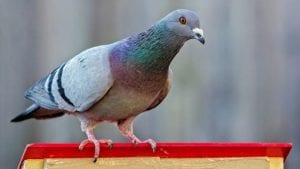
The pigeon first arrived outside the police station on Sept. 29. Worried about its safety, police took the bird into custody and held him over night.
Police learned that his owner was Gerry Gaumond of New Braintree, Mass., and that he became lost during a pigeon race that began in New York. He was expected to return home with the rest of Gaumond’s pigeons participating in the race, but it’s believed that he lost his way because he’s young and inexperienced.
Police released the pigeon on Sept. 30 and assumed he would make it home by the end of the day. However, he was found a short distance away and returned to the police department.
A second attempt to send the bird home on its own was made on Oct. 3 when Animal Control Officer Bill Hansen brought the pigeon to Depot Road in the area of the Exit 6 on-ramp to Route 101 and let him go.
The bird didn’t immediately take off. It flew up onto the roof of a house nearby and perched itself there.
Hansen didn’t hang around to see if the pigeon would leave. He assumed it would get its bearings and take off when it was ready.
“The last time I saw him he was sitting on that roof,” Hansen said Thursday.
Police received sightings of the pigeon in the area where it was released days later, but no one seems to know where he ended up.
Gaumond said it’s possible the pigeon could still fly home, but unlikely.
“Every day the chances get slimmer, but you never know. There’s a one in a million chance,” he said.
Gaumond, who races pigeons with his daughter through a club, said he’s had pigeons arrive home two months after they disappeared.
But their chances of survival diminish the longer they’re in the wild as they become easy prey for other animals.
Gaumond will soon begin breeding more pigeons to fly in races next year.
Source
Pigeon Patrol
Pigeon Patrol Products & Services is the leading manufacturer and distributor of bird deterrent (control) products in Canada. Pigeon Patrol products have solved pest bird problems in industrial, commercial, and residential settings since 2000, by using safe and humane bird deterrents with only bird and animal -friendly solutions. At Pigeon Patrol, we manufacture and offer a variety of bird deterrents, ranging from Ultra-flex Bird Spikes with UV protection, Bird Netting, 4-S Bird Gel and the best Ultrasonic and audible sound devices on the market today.
Canada’s top wholesaler for bird deterrent products for twelve consecutive years.
Contact us at 1- 877– 4– NO-BIRD, (604) 585-9279 or visit our website at https://www.pigeonpatrol.ca/
Bird Gone, Pigeon Gone, Pigeon problems, pigeon spikes, 1-877-4NO-BIRD, 4-S Gel, Bird Control, Pigeon Control, bird repellent, Bird Spikes, sonic bird repellent, stainless steel bird spikes, bird spikes Vancouver, Ultra Sonic Bird Control, Bird Netting, Plastic Bird Spikes, Canada bird spike deterrents, Pigeon Pests, B Gone Pigeon, Pigeon Patrol, pest controller, pest control operator, pest control technician, Pigeon Control Products, humane pigeon spikes, pigeon deterrents, pigeon traps, Pigeon repellents, Sound & Laser Deterrents, wildlife control, raccoon, skunk, squirrel deterrent, De-Fence Spikes, Dragons Den, Pigeon, Pigeon Patrol, Pigeons Roosting, Vancouver Pigeon Control, Bird Spikes, Bird Control, Bird Deterrent, Pigeon Deterrent, Surrey Pigeon Control, Pest, Seagull deterrent Vancouver Pigeon Blog, Birds Inside Home De-fence, Pigeon Nesting, Bird Droppings, Pigeon Dropping, woodpecker control, Keep The Birds Away, Birds/rats, seagull, pigeon, woodpecker, dove, sparrow, pidgeon control, pidgeon problem, pidgeon control, flying rats, pigeon Problems, bird netting, bird gel, bird spray, bird nails, bird guard, Pigeon control, Bird deterrents, Pigeon deterrents, Bird control, solutions, Pigeon prevention, Pigeon repellent, Bird proofing, Pest bird management, Pigeon spikes, Bird netting, Humane bird control, Bird exclusion, Urban bird control, Anti-roosting devices, Pigeon removal, Bird barriers
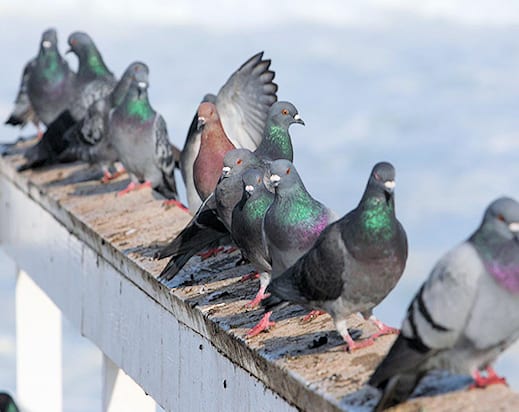
by Pigeon Patrol | Sep 25, 2023 | MBCA, pet bird, Pigeon Control, Pigeon Droppings, Pigeon Patrol's Services, Pigeon Predators
FAIRBANKS, Alaska – Twice a year, Marcus Dodge assigns a worker to don disposable coveralls and a respirator for a trip to a downtown Fairbanks parking garage to clean up deposits from a non-native species.
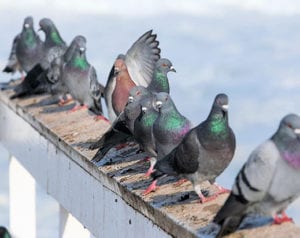
Dodge, director of the Fairbanks Parking Authority, estimates the worker picks up 150 gallons of pigeon dung annually and hauls it to the hazardous materials area at the landfill.
“Pigeon crap weighs a ton,” Dodge said. “It’s not a lot of fun to clean up.”
The downtown pigeon population appears to be growing, according to Dodge and others. Businesses are experimenting with ways to deter the bird, the Fairbanks Daily News-Miner reported.
Roofers last summer discovered 6 inches of pigeon guano on the roof of the Courthouse Square, the former federal courthouse.
Charlie Cole, Alaska’s former attorney general, who has kept an office in downtown Fairbanks since 1957, has been talking with neighbors about fending off the birds.
“They leave droppings around warm air outlets where they congregate,” Cole said. “I think it’s a nuisance.”
Pigeon droppings contain ammonia and uric acids that eat away at metal and the sealant on the parking garage concrete floor.
One pigeon can produce 25 pounds of guano per year, according to a government report detailing New York City’s pigeon problem. The droppings were cited as possible cause for speeding the decay of a Minneapolis bridge across the Mississippi River that collapsed in 2007 and killed 13 people.
Hunters and dog trainers introduced pigeons to Fairbanks, said Cathie Harms, spokeswoman for the Alaska Department of Fish and Game. The best way to deter them, she said, is to eliminate their food source.
“We are aware that some people are feeding pigeons,” she said. “If there wasn’t as much food, there wouldn’t be as many pigeons.”
A maintenance worker for the Springhill Suites Marriot a few months ago tried chasing them off with a recording of predator birds. The sound could be heard from a couple of blocks away and drew complaints from hotel neighbors.
Robert Franklin, a maintenance foreman for JL Properties Inc., which manages the Courthouse Square and the Northward apartment building, calls pigeons flying rats.
“They’re a hazard to the equipment. They’re a hazard to people,” he said. “They get into stuff they are not supposed to.”
He uses spike strips and moves owl decoys around to repel pigeons. Success has been mixed, he said.
Source
Pigeon Patrol
Pigeon Patrol Products & Services is the leading manufacturer and distributor of bird deterrent (control) products in Canada. Pigeon Patrol products have solved pest bird problems in industrial, commercial, and residential settings since 2000, by using safe and humane bird deterrents with only bird and animal -friendly solutions. At Pigeon Patrol, we manufacture and offer a variety of bird deterrents, ranging from Ultra-flex Bird Spikes with UV protection, Bird Netting, 4-S Bird Gel and the best Ultrasonic and audible sound devices on the market today.
Canada’s top wholesaler for bird deterrent products for twelve consecutive years.
Contact us at 1- 877– 4– NO-BIRD, (604) 585-9279 or visit our website at https://www.pigeonpatrol.ca/
Bird Gone, Pigeon Gone, Pigeon problems, pigeon spikes, 1-877-4NO-BIRD, 4-S Gel, Bird Control, Pigeon Control, bird repellent, Bird Spikes, sonic bird repellent, stainless steel bird spikes, bird spikes Vancouver, Ultra Sonic Bird Control, Bird Netting, Plastic Bird Spikes, Canada bird spike deterrents, Pigeon Pests, B Gone Pigeon, Pigeon Patrol, pest controller, pest control operator, pest control technician, Pigeon Control Products, humane pigeon spikes, pigeon deterrents, pigeon traps, Pigeon repellents, Sound & Laser Deterrents, wildlife control, raccoon, skunk, squirrel deterrent, De-Fence Spikes, Dragons Den, Pigeon, Pigeon Patrol, Pigeons Roosting, Vancouver Pigeon Control, Bird Spikes, Bird Control, Bird Deterrent, Pigeon Deterrent, Surrey Pigeon Control, Pest, Seagull deterrent Vancouver Pigeon Blog, Birds Inside Home De-fence, Pigeon Nesting, Bird Droppings, Pigeon Dropping, woodpecker control, Keep The Birds Away, Birds/rats, seagull, pigeon, woodpecker, dove, sparrow, pidgeon control, pidgeon problem, pidgeon control, flying rats, pigeon Problems, bird netting, bird gel, bird spray, bird nails, bird guard, Pigeon control, Bird deterrents, Pigeon deterrents, Bird control, solutions, Pigeon prevention, Pigeon repellent, Bird proofing, Pest bird management, Pigeon spikes, Bird netting, Humane bird control, Bird exclusion, Urban bird control, Anti-roosting devices, Pigeon removal, Bird barriers
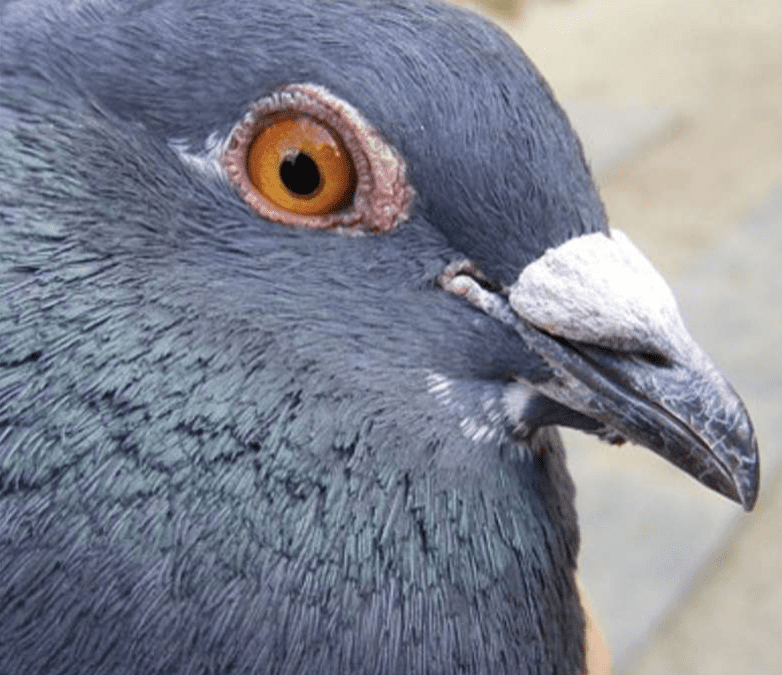
by Pigeon Patrol | Sep 18, 2023 | MBCA, pet bird, Pigeon Control, Pigeon Droppings, Pigeon Patrol's Services, Pigeon Predators
Pigeons and humans have lived together for thousands of years. Outside the cozy appearance of pigeons on large squares, pigeons can cause a lot of discomfort. There are very many different types of pigeons in the world, and only some species give people trouble.
This mainly concerns those species that live in cities and towns. They can occur in large numbers and multiply very rapidly. The city pigeons today are actually feral domestic pigeons that have been bred for centuries and originally stem from the rock dove
Pigeon droppings look awful on your roof and the uric acid (that white stuff) in the poo can damage your house. In addition, the droppings contain bacteria and fungi that can be dangerous to humans. Some examples are Histoplasmosis, Cryptococcosis and Psittacosis.
Home remedies for pest control are a great safe, affordable and eco-friendly alternative repellents to store-bought products, and below are some awesome tricks on how to get rid of pigeons on your roof. So, read on to find the best repellents for these pests!
First Off: Why Are They There?
If you suffer from pigeons on your roof, you must first ask why the birds are there. They might be there because there is a source of food and water. So to start off you must remove those. Never feed the pigeons. Make sure no one in your family or any of your neighbours feeds them. Pigeons like to eat grass seeds, berries and dog or cat food. Make sure the pigeons can not find anything to eat.
Pigeons might also like to use your roof or attic as their breeding grounds. The easiest way to discourage their nesting is to take away any access points they use. Below you will find various repellent methods to do just so.
7 Simple Tactics: How to Get Rid of Pigeons
Now its time for business. If you have pigeons on your roof, consider one of the 7 ways to get rid of them quick-smart. These methods are very effective when it comes to removing pest in your attics.
1. Use a Slinky
A nice alternative to bird spikes is using a Slinky. Attach it along the roof or balcony edge, with the circles not more than one finger length apart. Secure it tightly with tape or wire every 8 inches. The pigeons will not like it because they can’t hang out on your property. This has become a very popular and safe repellent for these unwanted birds.
2. Use A Standard Water Hose
You can also use a garden hose as a weapon in the battle against pigeons. The birds hate it if there is a strong jet of water directed onto them. You have to repeat this for a while, so they know you mean business.
3. Block Off All Entrances
This is a point we stress in our other pest removal or repellent guides: Ensure that pigeons can not get in. Once they’re in your attic, more and more pigeons will settle down on and around your house.
Make sure the attic and vents are properly screened off to keep birds and other animals from entering. Fill large openings and windows with heavy curtains or plastic strips to make it difficult to enter. If they can come in, make sure that the birds can not sit anywhere.
Close off corners where birds like to build nests with sturdy cloth and plaster. In large open areas such as barns and attics, you can close the spots above the rafters with oversized pigeon nets.
4. Mirrors and Noise
Use reflective objects. It is worth trying to use reflective tape on your roof edge, or hanging objects that make noise or balloons to scare off the pigeons. For instance, let some firecrackers go off any time a pigeon lands somewhere. Make sure to use firecrackers that are not dangerous for children. This bird repellent is as easy as it can be, and it works every single time!
5. String
Bind strings or rope from one end to the other where birds like to sit down. They won’t be able to find their balance for landing. Use rope that is not affected by the weather.
6. Spicy Pigeon Repellent
Pigeons do not like it spicy. Sprinkle cajun pepper, cinnamon or pepper in places where birds often sit. Do not be stingy with spices and repeat it after rain.
7. Birds of Prey
Use birds of prey to scare away pigeons. Unless you happen to have a bird of prey as a pet, you can buy a plastic or stone statue of an owl or hawk. Put it on the spot where the birds often sit. Unfortunately, this does not work forever, because the pigeons will ultimately understand the fake bird never moves.
Source
Pigeon Patrol
Pigeon Patrol Products & Services is the leading manufacturer and distributor of bird deterrent (control) products in Canada. Pigeon Patrol products have solved pest bird problems in industrial, commercial, and residential settings since 2000, by using safe and humane bird deterrents with only bird and animal -friendly solutions. At Pigeon Patrol, we manufacture and offer a variety of bird deterrents, ranging from Ultra-flex Bird Spikes with UV protection, Bird Netting, 4-S Bird Gel and the best Ultrasonic and audible sound devices on the market today.
Canada’s top wholesaler for bird deterrent products for twelve consecutive years.
Contact us at 1- 877– 4– NO-BIRD, (604) 585-9279 or visit our website at https://www.pigeonpatrol.ca/
Bird Gone, Pigeon Gone, Pigeon problems, pigeon spikes, 1-877-4NO-BIRD, 4-S Gel, Bird Control, Pigeon Control, bird repellent, Bird Spikes, sonic bird repellent, stainless steel bird spikes, bird spikes Vancouver, Ultra Sonic Bird Control, Bird Netting, Plastic Bird Spikes, Canada bird spike deterrents, Pigeon Pests, B Gone Pigeon, Pigeon Patrol, pest controller, pest control operator, pest control technician, Pigeon Control Products, humane pigeon spikes, pigeon deterrents, pigeon traps, Pigeon repellents, Sound & Laser Deterrents, wildlife control, raccoon, skunk, squirrel deterrent, De-Fence Spikes, Dragons Den, Pigeon, Pigeon Patrol, Pigeons Roosting, Vancouver Pigeon Control, Bird Spikes, Bird Control, Bird Deterrent, Pigeon Deterrent, Surrey Pigeon Control, Pest, Seagull deterrent Vancouver Pigeon Blog, Birds Inside Home De-fence, Pigeon Nesting, Bird Droppings, Pigeon Dropping, woodpecker control, Keep The Birds Away, Birds/rats, seagull, pigeon, woodpecker, dove, sparrow, pidgeon control, pidgeon problem, pidgeon control, flying rats, pigeon Problems, bird netting, bird gel, bird spray, bird nails, bird guard, Pigeon control, Bird deterrents, Pigeon deterrents, Bird control, solutions, Pigeon prevention, Pigeon repellent, Bird proofing, Pest bird management, Pigeon spikes, Bird netting, Humane bird control, Bird exclusion, Urban bird control, Anti-roosting devices, Pigeon removal, Bird barriers
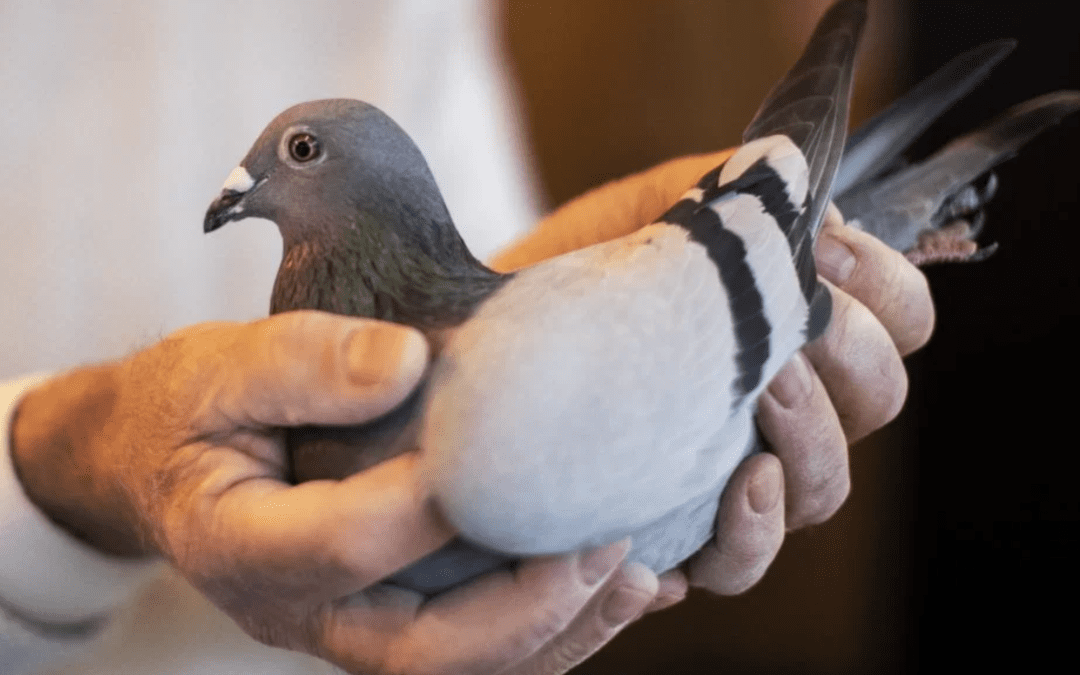
by Pigeon Patrol | Sep 18, 2023 | Bird Spike, pet bird, Pigeon Control, Pigeon Droppings, Pigeon Predators, Pigeon Spikes, Pigeons
How do you like to communicate with your friends? Do you pick up the telephone to talk to them? Or would you prefer to send them text messages? Perhaps you have fun sending short messages and pictures via smartphone apps?
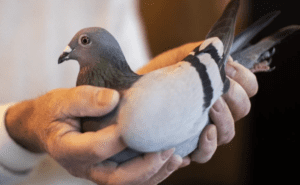
What if you had a bird that would deliver a message to your friend? Your friend could then write a response that your bird would bring back to you. Sound a bit like sending owls in the wizarding world of Harry Potter? That type of magic isn’t entirely the stuff of books, especially if you have a homing pigeon!
Homing pigeons are a type of domestic pigeon descended from the rock pigeon. Wild rock pigeons have an innate ability to find their way home from long distances. Today’s homing pigeons have been carefully bred to do the same, including carrying messages over those long distances.
Unlike the owls in the Harry Potter books, homing pigeons can’t be given an address or a person to fly to. If taken a ways from home, though, they can find their way back home in a remarkably short period of time. In fact, homing pigeons have been known to find their way home from as many as 1,100 miles away, and they can travel an average of 50 miles per hour with bursts of up to 90 mph!
This ability has made them valuable as messengers since at least the time of the ancient Egyptians. Homing pigeons were used extensively in both World War I and World War II. Several birds even received medals for their service in delivering critical messages during wartime!
But how do they find their way home over such long distances? Could you imagine being dropped off 1,000 miles away and having to find your way home? You might reach for a map, smartphone, or Global Positioning System (GPS) receiver to guide you home. What do homing pigeons do?
Despite many scientific studies over the years, no one yet fully understands how homing pigeons navigate home across long distances. There are several theories that experts believe explain at least part of the processes at work.
Scientists now believe that homing pigeons have both compass and map mechanisms that help them navigate home. The compass mechanism helps them to fly in the right direction, while the map mechanism allows them to compare where they are to where they want to be (home).
A homing pigeon’s compass mechanism likely relies upon the Sun. Like many other birds, homing pigeons can use the position and angle of the Sun to determine the proper direction for flight. The map mechanism, however, remains a bit of a mystery.
Some researchers believe homing pigeons use magnetoreception, which involves relying on Earth’s magnetic fields for guidance. Researchers have found that homing pigeons have concentrations of iron particles in their beaks that would allow them to detect magnetic fields easily.
More recent research, however, suggests that homing pigeons may instead rely upon low-frequency infrasound to find their way home. These low-frequency sounds are inaudible to human ears, but they’re created by nearly everything, including the oceans and Earth’s crust.
Homing pigeons may listen to these sounds until they recognize the signature sounds of their home roost. Of course, researchers also note that, once homing pigeons get closer to home, they may also be guided, in part, by familiar landmarks, just like humans use when navigating.
Source
Pigeon Patrol Products & Services is the leading manufacturer and distributor of bird deterrent (control) products in Canada. Pigeon Patrol products have solved pest bird problems in industrial, commercial, and residential settings since 2000, by using safe and humane bird deterrents with only bird and animal -friendly solutions. At Pigeon Patrol, we manufacture and offer a variety of bird deterrents, ranging from Ultra-flex Bird Spikes with UV protection, Bird Netting, 4-S Bird Gel and the best Ultrasonic and audible sound devices on the market today.
Canada’s top wholesaler for bird deterrent products for twelve consecutive years.
Contact us at 1- 877– 4– NO-BIRD, (604) 585-9279 or visit our website at https://www.pigeonpatrol.ca/
Bird Gone, Pigeon Gone, Pigeon problems, pigeon spikes, 1-877-4NO-BIRD, 4-S Gel, Bird Control, Pigeon Control, bird repellent, Bird Spikes, sonic bird repellent, stainless steel bird spikes, bird spikes Vancouver, Ultra Sonic Bird Control, Bird Netting, Plastic Bird Spikes, Canada bird spike deterrents, Pigeon Pests, B Gone Pigeon, Pigeon Patrol, pest controller, pest control operator, pest control technician, Pigeon Control Products, humane pigeon spikes, pigeon deterrents, pigeon traps, Pigeon repellents, Sound & Laser Deterrents, wildlife control, raccoon, skunk, squirrel deterrent, De-Fence Spikes, Dragons Den, Pigeon, Pigeon Patrol, Pigeons Roosting, Vancouver Pigeon Control, Bird Spikes, Bird Control, Bird Deterrent, Pigeon Deterrent, Surrey Pigeon Control, Pest, Seagull deterrent Vancouver Pigeon Blog, Birds Inside Home De-fence, Pigeon Nesting, Bird Droppings, Pigeon Dropping, woodpecker control, Keep The Birds Away, Birds/rats, seagull, pigeon, woodpecker, dove, sparrow, pidgeon control, pidgeon problem, pidgeon control, flying rats, pigeon Problems, bird netting, bird gel, bird spray, bird nails, bird guard, Pigeon control, Bird deterrents, Pigeon deterrents, Bird control, solutions, Pigeon prevention, Pigeon repellent, Bird proofing, Pest bird management, Pigeon spikes, Bird netting, Humane bird control, Bird exclusion, Urban bird control, Anti-roosting devices, Pigeon removal, Bird barriers

